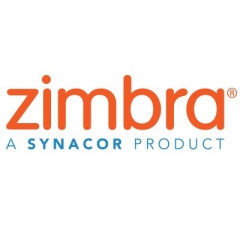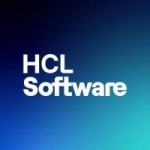What is our primary use case?
We have customers that are using the on-premise version of Zimbra Collaboration and others are using the cloud.
We Zimbra Collaboration to send and receive email primarily. Additionally, we use it for collaboration, sharing documents, and calendar contacts. It's a solution for massaging and collaboration.
What is most valuable?
The backup and storage management features of Zimbra Collaboration are valuable.
What needs improvement?
Zimbra Collaboration could improve the migration from a basic solution to a more containerized solution. For example, the installation should be able to extend to the containers and manage them with some solution, such as OpenShift or Kubernetes.
The video conference solution Zimbra Connect is a mediocre solution for video conferences. They should make it more similar to Office 365 and add some collaboration with other solutions, such as Alfresco.
For how long have I used the solution?
I have been using Zimbra Collaboration for approximately two years.
What do I think about the stability of the solution?
Zimbra Collaboration must work on the high availability of the platform.
I have found Zimbra not to be very stable. If we see in one node, we have a lot of patches and collective principles of security. Zimbra is not very stable, but it's okay. We can see some bugs in the Zimbra Collaboration but they release patches to fix them. For example, in the last patches, they corrected a vulnerability that could have caused an attack with Log4j.
What do I think about the scalability of the solution?
This solution is scalable horizontally and vertically
Zimbra Collaboration is suitable for all sizes of companies, small, medium, and large companies, such as government, industry, and media.
How are customer service and support?
I have been satisfied with the support.
How was the initial setup?
The initial setup of Zimbra Collaboration is straightforward. However, we must be the administrators of Linux because we need to have access to the command-line to install it. We cannot install it with the graphic interface. We must have the ability to manage some command line code in the systems of Linux.
The time of the deployment depends on the complexity of the architecture. For example, if we install it in one node, it can take a maximum of one hour. However, when we install in the multi-node system. A complex installation can take over three days.
What about the implementation team?
We provide the services for our customers, the fabric, and the training centers.
What's my experience with pricing, setup cost, and licensing?
The price of the solution is low.
The total cost of our projects is low. For example, if we compare Zimbra Collaboration with Microsoft, the license of one account they are probably the same price. However, after the initial licensing, to add more options or use features in the Microsoft solution you must purchase them. In Zimbra, when we buy a license, there are only two levels of license. If we buy the premium license, we have almost all the features activated in our license.
What other advice do I have?
My advice to those wanting to implement Zimbra Collaboration is they will have to have some experience in the manipulation of Linux systems. If there are issues with Zimbra Collaboration there should be someone with experience. If there is no one with experience with the ability to manage Linux systems, you will not be able to troubleshoot any problem in Zimbra Collaboration.
I rate Zimbra Collaboration an eight out of ten.
Which deployment model are you using for this solution?
On-premises
Disclosure: My company has a business relationship with this vendor other than being a customer: Partner












